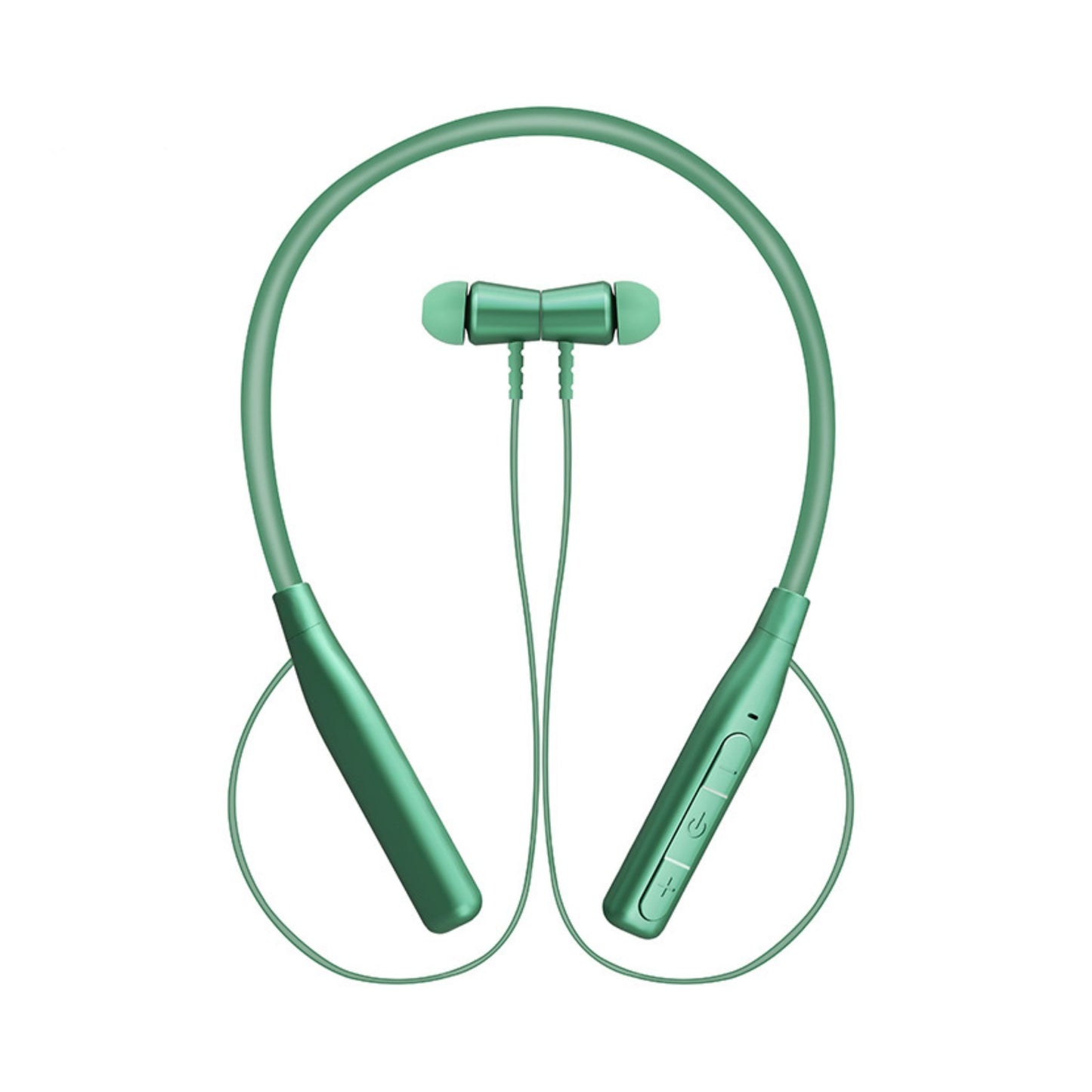
The history and features of Bluetooth Technology
- How Bluetooth got its name
- A brief history of Bluetooth technology
- The latest features of Bluetooth 5.0-5.3
- The advantages of Bluetooth technology
- How Bluetooth technology used
- Conclusion
Introduction
Bluetooth technology is a wireless communication technology that allows devices to communicate with each other over short distances. It uses radio waves to share, so it does not require a direct line of sight between the two devices. Bluetooth technology is becoming increasingly popular because it eliminates the need for wires and cables.
You can link your stereo system or soundbar to your smartphone and the plethora of streaming services it offers wirelessly via Bluetooth, which also powers wireless headphones and portable speakers.
How Bluetooth got its name
Bluetooth technology's name comes from a 10th-century Scandinavian king, Harald Bluetooth. The king was known for uniting warring factions, and the Bluetooth logo combines his initials.

The advantages of Bluetooth technology
Bluetooth technology has many advantages. It is wireless, so it eliminates the need for wires and cables. It also consumes low power, so it doesn't drain batteries as quickly as other wireless technologies. Bluetooth technology is also very secure, making it difficult for unauthorized devices to eavesdrop on conversations or data transmissions.
The use of Bluetooth technology.
Bluetooth technology connects various devices, including headsets, keyboards, mice, car stereos, and numerous other devices, from printers and digital cameras to computers.
Even yet, Bluetooth continues to be the most misunderstood audio technology despite its widespread use. Numerous Bluetooth codecs are available, and some individuals assert that using a particular codec would enhance Bluetooth sound quality. But it's difficult to measure and even harder to hear those differences.
Bluetooth technology has a considerably lesser impact on sound quality than the device's actual design, which is crucial. You may hear evident variances if you use various wireless speakers or headphones. If you experiment with other Bluetooth codecs, the change will likely be little or even inaudible.
To put it another way, you should buy Bluetooth speakers or headphones based on their core sound quality—as described in reviews or as you've decided—and not depending on the Bluetooth audio codec they support.
There isn't much of a difference between the codecs.
Here, you need to keep in mind two things.
- The device features with a lower Bluetooth version are active while pairing. For example, you can only get the Bluetooth 5.2 features when pairing a Bluetooth 5.3 mobile phone with a Bluetooth 5.2 speaker.
- Every new version of Bluetooth integrates the enhancements from the previous versions, so you won't need to choose between them; check for the most recent version on your future devices.

Bluetooth technology.
Let's start with a Bluetooth technology history and list all the iterations of the Bluetooth protocol, along with its key new features. By doing this, you'll be able to compare the various versions and their release dates and judge the significance of each version's new features in light of how much innovation it represents.
1999-Bluetooth 1.0
Because it was the technology's initial step, Bluetooth 1.0 had a significant connection and security issues. It's out of use right now.
2002-Bluetooth 1.1
Bluetooth 1.0 received its first upgrade, version 1.1. It is already an advanced and commercial version with a transmission rate of around 721 kbps.
2003-Bluetooth 1.2
In 2003 the upgraded version eliminated any remaining interferences from version 1.1.
2004-Bluetooth 2.0
The advent of the Enhanced Data Rate (EDR), which enabled it to deliver a transmission rate of slightly more than 2 Mb/s, was its key feature.
2007-Bluetooth 2.1
The new version included a feature that fundamentally altered Bluetooth: the ability for one terminal to add another and immediately connect without the requirement for a PIN or similar security measure.
2009-Bluetooth 3.0
The label "HS" for "High Speed" was introduced with the release of this version. It indicated a significant increase in transmission rate, which may approach 24 Mbps.
2010- Bluetooth 4.0
To counteract the technology's excessive battery consumption, Bluetooth 4.0, one of the most significant versions of the standard released. The release retained the 24 Mb/s transfer rate and introduced more minor, less powerful devices because of its low power consumption.
2013- Bluetooth 4.1
The upgrade focused primarily on the IoT (Internet of Things) industry by enabling direct connections between tiny devices.
2014-Bluetooth 4.2
Included support for the IPv6 protocol to allow for direct Internet access.
2016-Bluetooth 5.0
A significant advancement was released. It doubled transfer rates, quadrupled ranges, maintained low power consumption tailored for the Internet of Things, and allowed for more data transfer in each message.
2019 - Bluetooth 5.1
The release focused on location and enabled devices to pinpoint the position of other connected devices within a few millimeters.
2020- Bluetooth 5.2
The version commonly known as Bluetooth LE Audio enhanced energy economy and sound quality in all connected devices. The Low Complexity Communication Codec (LC3), a new codec that uses more effective compression and decompression techniques, enables audio to be sent simultaneously to numerous devices.
2021-Bluetooth 5.3
Revealed in July 2021 and made available in May 2022, this version provides lower consumption when utilized, less connection interference, greater connection security, and higher quality.

Features And Differences of Bluetooth versions 5.1, 5.2, and 5.3
Bluetooth 5.1
A device using this technology may not only identify a nearby compatible device but also point in its direction of it. A device may now use Bluetooth to indicate if another device is nearby or far away; Bluetooth 5.1's standard allows for almost accurate pointing down to the centimeter.
The two techniques used for this are known as AoA and AoD:
AoA (Angle of Arrival):
The target device broadcasts a signal using a single antenna; the locating device analyzes the signal's phase change as it travels by each of its many antennas to ascertain the target device's direction;
AoD (Angle of Departure):
In this case, the object to be located sends signals using several antennas, while the device to be located receives the signals using a single antenna. Comparing the differences in the data obtained from the different signals allows us to find the device. As a result, the technology is helpful to the user to locate himself within a museum or find headphones using a mobile device. These are only a few simple examples.
There are many potential uses for Bluetooth 5.1. Additionally, this version makes it possible to create a connection between devices more rapidly and with less energy use.
Bluetooth 5.1 enhances advertising or how a device communicates. This advance might result in quicker or more reliable connections.

Bluetooth 5.2 (LEPC + LE Audio + )
It enhanced the connecting experience for compatible devices, namely headphones and portable speakers. To address this, Bluetooth 5.2 introduces EATT (Enhanced Attribute Protocol), an upgraded version of ATT (Attribute Protocol), a protocol that specifies how data from a device (attributes) should be transported, read from, and saved in another machine. EATT enhances the experience over ATT by permitting many simultaneous transmissions (ATT only allows one at a time) and L2CAP (Logical Link Control and Adaptation Protocol) packet exchanges. As a result, the connections' latency—the amount of time it takes to establish and exchange information decreases, and the transmission signal become more steady.
LE Power Control (LEPC), a protocol that optimizes power usage by enabling two connected devices to modify transmission power dynamically, is another significant new feature of Bluetooth 5.2.
However, LE Audio is undoubtedly Bluetooth 5.2's most striking feature. This function optimizes the power consumption of the connection to reduce the drain on the device's battery while enhancing the audio quality of devices like wireless headphones.
The quality enhancement is due to the LC3 (Low Complexity Communications) codec, which reduces the transmission's size without sacrificing audio quality.
Other significant features are Multi-Stream Audio and Audio Sharing. The former makes Bluetooth audio sharing simple. You can do this via personal sharing, such as when a person lends a buddy his smartphone to share music, or through location, a feature that allows sharing from a specific area, such as an airport departure lounge.
The multi-stream audio feature enables synchronized sound transmission in many streams simultaneously.
Since TWS (True Wireless Stereo) headphones typically receive the signal on one side and transmit it to the other, Multi-Stream Audio allows both headphones to concurrently receive the data from the source (which can be a mobile phone or another device).
Bluetooth 5.3
The July 2021 release improved the technology's suitability for Internet of Things applications like wireless speakers, lightbulbs, and wearable devices like bracelets and smartwatches. To this purpose, Bluetooth 5.3 has a connection subclassing mode that enables a device to switch rapidly between a high- and low-performance state, conserving energy.
Bluetooth 5.3 is advantageous, for example, for a wristwatch that sends data to a smartphone. Once the data is delivered, the gadget may immediately switch to a less-active mode to save battery life.
A channel categorization improvement is also an advanced feature in the new version. The Bluetooth frequency range is split into numerous channels to lessen the chance of interference. Congested or too loud areas are classified as "bad" and avoided while communicating.
In earlier iterations of the technology, only the communication's primary device could classify the channels (Master-Slave connection). In Bluetooth 5.3, the channel categorization procedure involves both the primary device and the peripheral device (the one that the primary connects with). As a result, the channels with a lower speed or too busy become more accurate, strengthening the connection.
Including the AdvDataInfo (ADI) parameter in adv-packets is another new function of Bluetooth 5.3 that helps save energy. It may also enhance connection effectiveness (recall, the way the device transmits a signal to let you know it is available for connection).
Duplicate advertising packages are promptly recognized and eliminated thanks to ADI. Removing unnecessary packets frees up processor power, which lowers power use and boosts connection performance.
Last, Bluetooth 5.3 improves connection security by allowing for better control over the size of encryption keys.
Conclusion
Bluetooth technology is a wireless communication technology with many advantages over other technologies. It is becoming increasingly popular because it eliminates the need for wires and cables.
Bluetooth technology is standard in various devices, including headsets, wireless headphones, portable speakers, keyboards, mice, etc. The latest version of Bluetooth, 5.0, has significantly higher speeds and a more extended range than previous versions. Bluetooth 5.0 also has new features such as improved security, better power management, and support for low-power devices.
If you're looking for wireless technology that is easy to use and has many benefits, then Bluetooth is the perfect choice for you.



As I suspected (but never researched) the bluetooth codecs don’t actually play an important part. It’s the device’s actual design that is of importance.
This was such a well made article on the history of bluetooth. It’s actually funny how they took that king’s name for such a thing.
We’ve all gotten used to bluetooth being around now but just go back some years and remember how life was without it and you’ll realize the importance it has for us all. We won’t appreciate something to its fullest value unless it is taken away from us.